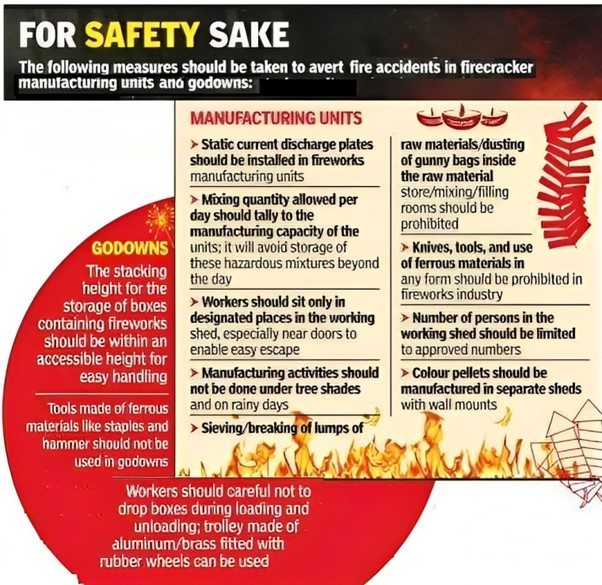7667766266
enquiry@shankarias.in
Mains (GS Paper III) – Conservation, environmental pollution and degradation, environmental impact assessment, and disaster management.
The recent firecracker factory blaze in Gujarat caused fatalities of 21 people including few children’s.
|
Status of Fire Blast Related Fatalities in India |
|

|
Petroleum and Explosive Safety Organisation (PESO) |
|